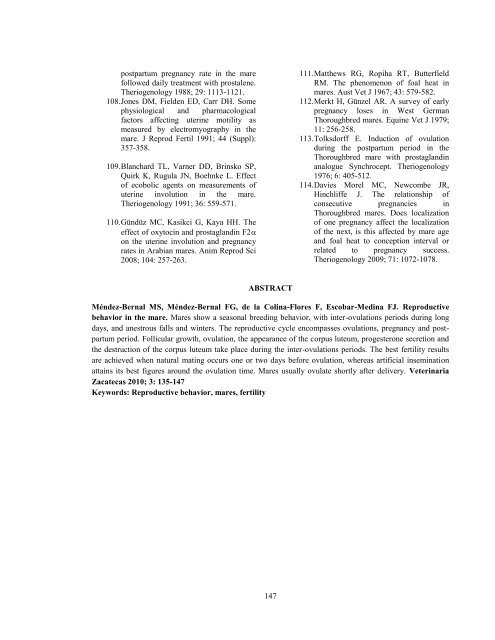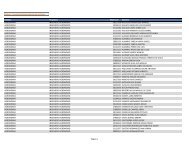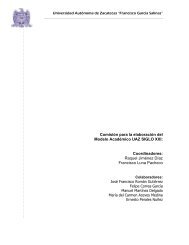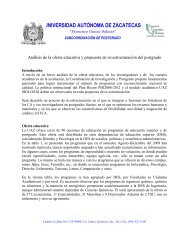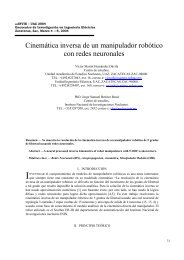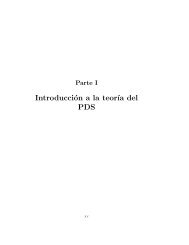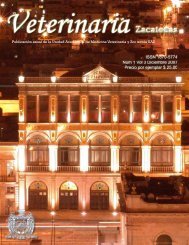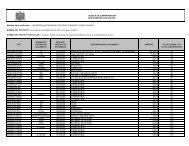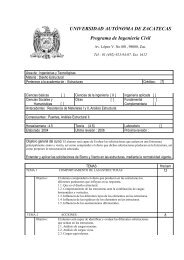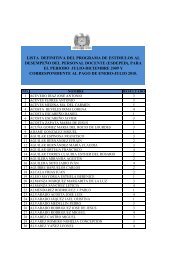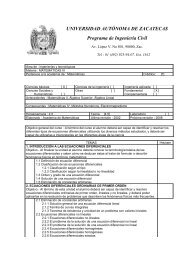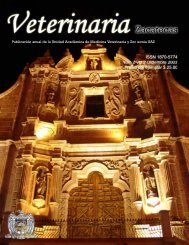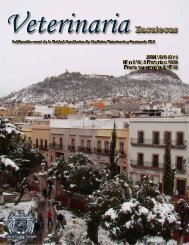Revista Veterinaria Zacatecas 2010 - Universidad Autónoma de ...
Revista Veterinaria Zacatecas 2010 - Universidad Autónoma de ...
Revista Veterinaria Zacatecas 2010 - Universidad Autónoma de ...
You also want an ePaper? Increase the reach of your titles
YUMPU automatically turns print PDFs into web optimized ePapers that Google loves.
postpartum pregnancy rate in the mare<br />
followed daily treatment with prostalene.<br />
Theriogenology 1988; 29: 1113-1121.<br />
108. Jones DM, Fiel<strong>de</strong>n ED, Carr DH. Some<br />
physiological and pharmacological<br />
factors affecting uterine motility as<br />
measured by electromyography in the<br />
mare. J Reprod Fertil 1991; 44 (Suppl):<br />
357-358.<br />
109. Blanchard TL, Varner DD, Brinsko SP,<br />
Quirk K, Rugula JN, Boehnke L. Effect<br />
of ecobolic agents on measurements of<br />
uterine involution in the mare.<br />
Theriogenology 1991; 36: 559-571.<br />
110. Gündüz MC, Kasikci G, Kaya HH. The<br />
effect of oxytocin and prostaglandin F2<br />
on the uterine involution and pregnancy<br />
rates in Arabian mares. Anim Reprod Sci<br />
2008; 104: 257-263.<br />
111. Matthews RG, Ropiha RT, Butterfield<br />
RM. The phenomenon of foal heat in<br />
mares. Aust Vet J 1967; 43: 579-582.<br />
112. Merkt H, Günzel AR. A survey of early<br />
pregnancy loses in West German<br />
Thoroughbred mares. Equine Vet J 1979;<br />
11: 256-258.<br />
113. Tolksdorff E. Induction of ovulation<br />
during the postpartum period in the<br />
Thoroughbred mare with prostaglandin<br />
analogue Synchrocept. Theriogenology<br />
1976; 6: 405-512.<br />
114. Davies Morel MC, Newcombe JR,<br />
Hinchliffe J. The relationship of<br />
consecutive pregnancies in<br />
Thoroughbred mares. Does localization<br />
of one pregnancy affect the localization<br />
of the next, is this affected by mare age<br />
and foal heat to conception interval or<br />
related to pregnancy success.<br />
Theriogenology 2009; 71: 1072-1078.<br />
ABSTRACT<br />
Mén<strong>de</strong>z-Bernal MS, Mén<strong>de</strong>z-Bernal FG, <strong>de</strong> la Colina-Flores F, Escobar-Medina FJ. Reproductive<br />
behavior in the mare. Mares show a seasonal breeding behavior, with inter-ovulations periods during long<br />
days, and anestrous falls and winters. The reproductive cycle encompasses ovulations, pregnancy and postpartum<br />
period. Follicular growth, ovulation, the appearance of the corpus luteum, progesterone secretion and<br />
the <strong>de</strong>struction of the corpus luteum take place during the inter-ovulations periods. The best fertility results<br />
are achieved when natural mating occurs one or two days before ovulation, whereas artificial insemination<br />
attains its best figures around the ovulation time. Mares usually ovulate shortly after <strong>de</strong>livery. <strong>Veterinaria</strong><br />
<strong>Zacatecas</strong> <strong>2010</strong>; 3: 135-147<br />
Keywords: Reproductive behavior, mares, fertility<br />
147


